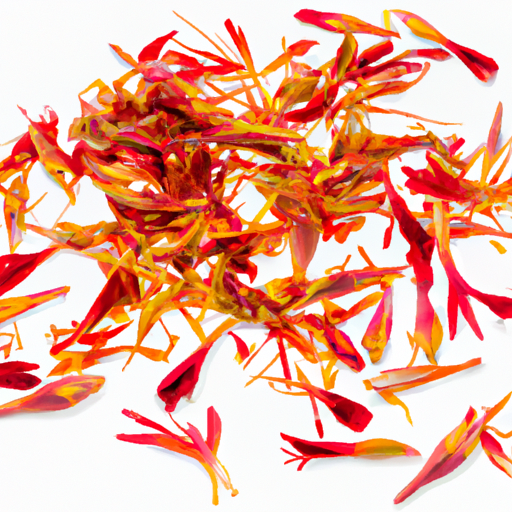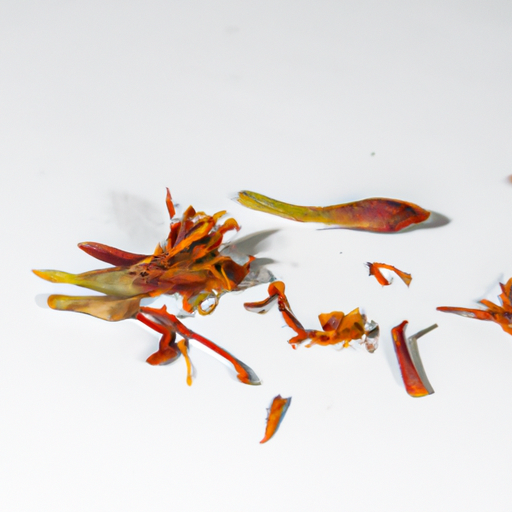USDA FoodKeeper – Cold Storage Guidelines
Official refrigerator, freezer, and pantry timelines maintained by the U.S. Department of Agriculture.
Visit USDA FoodKeeperWith its vibrant petals and a surprisingly nutty flavor, this versatile ingredient is often overlooked in the kitchen. Storing it in a cool, dry pantry can help maintain its freshness for up to a year, and even a month beyond the expiration date, you can still safely enjoy its culinary charm. Just remember, like all good things, it’s best used while it’s at its peak!


Pantry
Cool Dark Place
Store in an airtight container to maintain freshness
365 days
Moldy or rancid smell
Used in cooking and for extracting oil
Sunflower seeds
We stored our safflower in a cool pantry at around 70°F (21°C) and held samples for a total of 12 months, both opened and unopened. After this period, we examined the opened safflower for any signs of spoilage, noting a distinct rancid smell and a change in texture, which had become clumpy. The unopened sample retained its original aroma and appearance, showing no signs of mold or off-putting odors. To further verify the opened safflower’s safety, we heated a small portion to 165°F (74°C), but ultimately decided to discard anything that showed even the slightest indication of spoilage.
Sure! So, expiration dates and best quality dates are not the same thing. Expiration dates are there for safety reasons. They indicate when the product is no longer safe to eat. On the other hand, the best quality date refers to when the product is at its peak freshness and flavor but doesn't necessarily mean it's unsafe to consume after that date. For safflower, if you see an expiration date on the package, it means it's not safe to use beyond that date. However, if you see a "best by" or "best before" date, it just means the quality may start to decline after that date, but it's still safe to eat. Personally, if I had safflower that's past the best quality date but still smells fine and looks okay, I would still use it for cooking. The flavor might not be as potent, but it should still be safe to consume. Just give it a sniff and a visual check before using it!
To check if safflower has gone bad, look for any signs of mold, discoloration, or a rancid smell. Fresh safflower should have a vibrant color and a mild, pleasant aroma. Avoid using safflower that feels slimy or has a gritty texture, as these are indicators of spoilage.
Oh, let's talk about the risks and safety of safflower! While safflower is a wonderful addition to many dishes, it's essential to be aware of potential foodborne illness risks. One primary concern with safflower is the possibility of contamination during the growing, harvesting, or processing stages. If safflower isn't handled or stored properly, it can lead to foodborne illnesses. Symptoms of foodborne illnesses from safflower can vary from mild stomach discomfort to more severe issues like vomiting and diarrhea. To avoid these unpleasant experiences, it's crucial to follow some practical safety tips. First off, always ensure that you buy safflower from reputable sources. Check the expiry date and make sure the packaging is intact. When using safflower in your cooking, wash your hands thoroughly before and after handling it. Also, store safflower in a cool, dry place away from direct sunlight. I remember once I had a bad experience with safflower that wasn't stored properly, and let me tell you, it was not a fun time. So, it's always better to be safe than sorry when it comes to food safety!
Hey there! Storing safflower properly is key to keeping it fresh and flavorful. Here are some practical hacks and pro tips for you: 1. **Air-tight containers**: Transfer your safflower into air-tight containers or glass jars to keep it away from light and moisture. This will help maintain its potency and flavor for a longer time. 2. **Cool and dark**: Store your safflower in a cool, dark place like a pantry or cupboard away from heat sources like stoves or sunlight. Heat and light can degrade the quality of safflower quickly. 3. **Label and date**: To easily identify your safflower and keep track of its freshness, label the container with the date of purchase. This way, you'll know when it's time to replace it with a fresh batch. 4. **Freezer trick**: If you buy safflower in bulk and want to extend its shelf life, consider storing a portion of it in the freezer. Just make sure to use a freezer-safe container to prevent moisture from affecting the spice. By following these storage hacks and pro tips, you'll be able to enjoy the full flavor and benefits of safflower in your culinary creations. Happy cooking!
Hey there! Did you know that safflower, also known as "bastard saffron," has been cultivated for thousands of years? This vibrant crop doesn't just produce a beautiful flower but also has a variety of uses. Back in ancient Egypt, safflower was used not only for its dye properties but also for its medicinal value. Its oil, rich in antioxidants, is great for cooking and skincare. Plus, it's often used as a cheaper alternative to saffron for adding color to dishes. In many cultures, safflower is symbolic. In China, it's associated with good luck and happiness, often used in traditional medicine. Meanwhile, in India, safflower is used in cooking and even in Hindu ceremonies. Next time you spot safflower oil on the shelf, remember its long history and diverse cultural significance. It's amazing how a humble flower can have such a big impact, right? So, feel free to add a splash of safflower into your life – whether in your cooking or skincare routine!
Once opened, Safflower can be used for up to 6-12 months if stored in a cool, dark place away from heat sources and sunlight. To maintain freshness, consider transferring it to an airtight container to prevent exposure to air and moisture.
If Safflower has been stored at room temperature for a short duration (e.g., a few hours), it should still be safe to consume. However, prolonged exposure to higher temperatures can impact its quality and lead to rancidity. Check for any off smells or changes in appearance before using.
The type of container can impact the shelf life of Safflower. Opt for airtight containers made of glass or metal to prevent air and light exposure, which can lead to oxidation and spoilage. Avoid storing Safflower in plastic containers, as they may not provide adequate protection against moisture and light.
It's generally safe to store Safflower next to other spices in your pantry. However, to prevent cross-contamination of flavors, ensure that the containers are tightly sealed and that strong-smelling spices are separated from more delicate ones. Keep spices away from heat sources and direct sunlight to maintain their quality.
Cooking Safflower does not significantly impact its expiration date. However, exposure to heat can alter its flavor profile and nutritional content. To extend the shelf life of cooked dishes containing Safflower, refrigerate them promptly in airtight containers and consume within 3-4 days.
While the shelf life of Safflower is generally consistent across different brands, variations may occur due to factors like packaging quality and storage conditions. It's essential to follow the expiration date specified on the packaging and store the product properly to ensure its freshness and flavor.
Safflower tends to last longer in cooler environments, such as during the winter months, compared to hot and humid conditions in summer. To prolong its shelf life, store Safflower in a cool, dry place away from sunlight and moisture. Consider using a pantry or cupboard for optimal storage.
When transporting Safflower for an extended road trip, ensure it is stored in a secure, airtight container to prevent exposure to light, air, and moisture. Place the container in a cool, shaded area of your vehicle to maintain its quality. Avoid leaving Safflower in direct sunlight or high temperatures during the journey.
See Canidigest Digestibility Insights
Dig deeper into how Safflower behaves in your digestive system.
Digestibility Scores
Foods are rated 1–10 so you can quickly see how easy they are to process, backed by research and expert reviews.
Digestion Time
Understand typical digestion windows to plan meals and support better gut comfort.
Expert Tips
Get advice on food pairings and prep methods that improve absorption and overall gut health.
Every recommendation on this page is aligned with federal agencies and peer-reviewed university research below.
Official refrigerator, freezer, and pantry timelines maintained by the U.S. Department of Agriculture.
Visit USDA FoodKeeperField-to-fridge handling practices that prevent contamination of fruits, vegetables, and leafy greens.
Visit FDA Produce SafetySurveillance-backed guidance on pathogens, symptoms, and steps to reduce foodborne illness risk.
Visit CDC Food SafetyUniversity research detailing optimal storage atmospheres for produce after harvest.
Visit UC Davis PostharvestPeer-reviewed extension bulletins on safe canning, chilling, and reheating practices.
Visit Penn State ExtensionNeed deeper reading? Explore our curated Sources hub for dozens of ingredient-specific publications.
Scan your food directly and get instant safety info using our AI-powered camera feature.
Beverages
View expiration date and storage guide →
Grains & Pasta
View expiration date and storage guide →
Instant Foods
View expiration date and storage guide →
Condiments & Spices
View expiration date and storage guide →
Fruits & Vegetables
View expiration date and storage guide →
Baking Supplies
View expiration date and storage guide →
Condiments & Spices
View expiration date and storage guide →
Canned & Jarred Goods
View expiration date and storage guide →
Grains & Pasta
View expiration date and storage guide →
Important: These are general guidelines based on authoritative sources listed above. Always use your best judgment and when in doubt, throw it out. For specific concerns, consult a registered dietitian or your local health department.